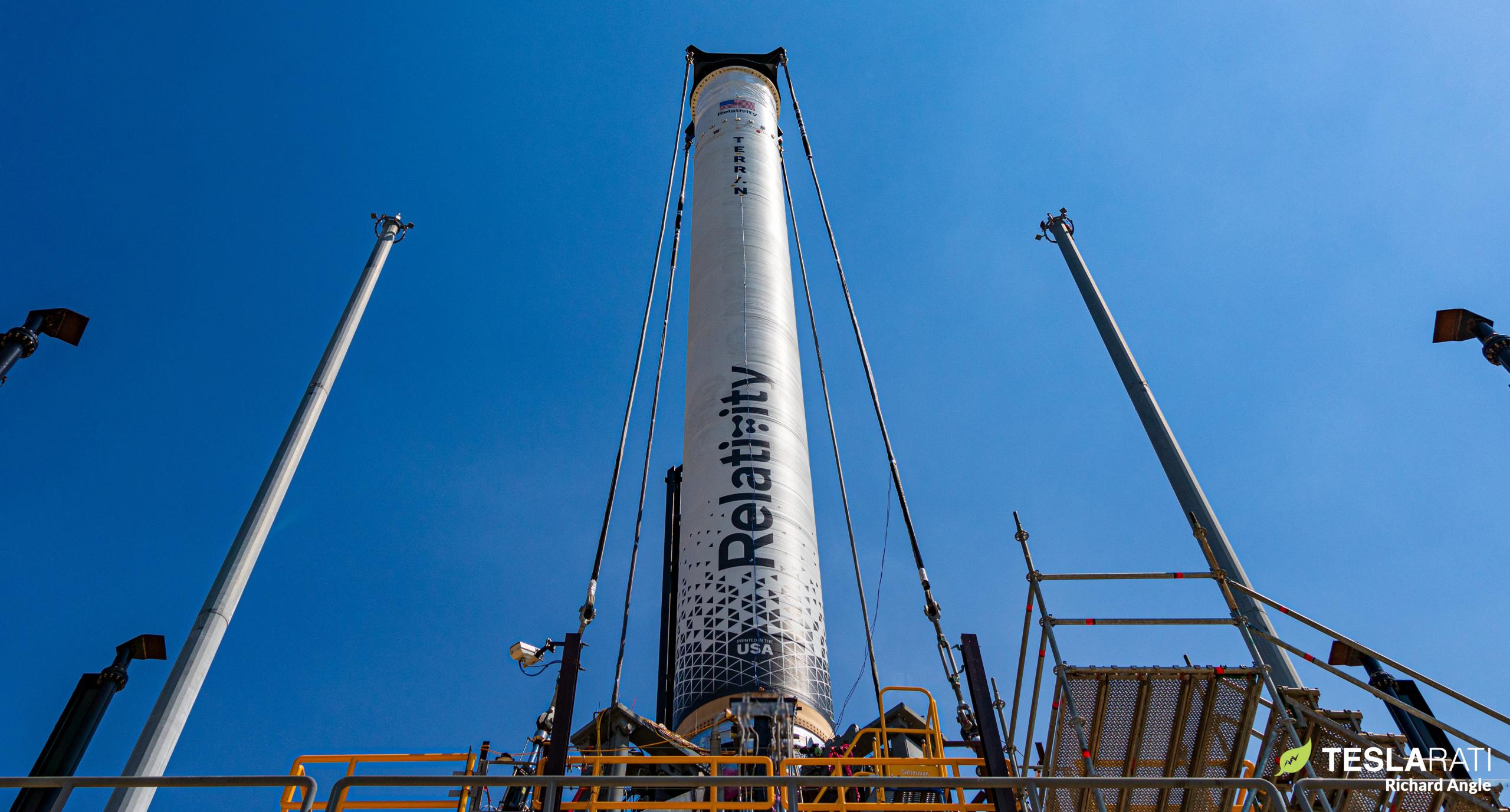

News
Relativity’s first 3D-printed rocket aims to debut a new rocket fuel
Relativity can almost taste the vacuum of space. A substantial amount of work remains, but the startup continues to defy expectations with its relentless and methodical push towards the first orbital launch of a 3D-printed rocket.
Founded in 2015, the Los Angeles-based aerospace company has taken its few years of obligatory delays in stride while pursuing a 2020 debut for its (relatively) small Terran 1 rocket. In a world with dozens of serious rocket startups, missing one’s initial launch target is practically a rite of passage – the path to orbit is never as straight and bump-free as the highway on-ramps that are often promised in pitch decks. Relativity Space, however, is no average rocket startup.
Save for SpaceX, which operates in a league of its own, no other private rocket startup has come close to matching the $1.3 billion Relativity has raised to develop Terran 1 and the much larger Terran R. More importantly, in a recent interview with Aviation Week, CEO Tim Ellis (a former Blue Origin engineer) revealed that the company could be “weeks away” from the first launch of Terran 1, a rocket that is 85% 3D-printed by mass and could simultaneously debut a new kind of rocket fuel.
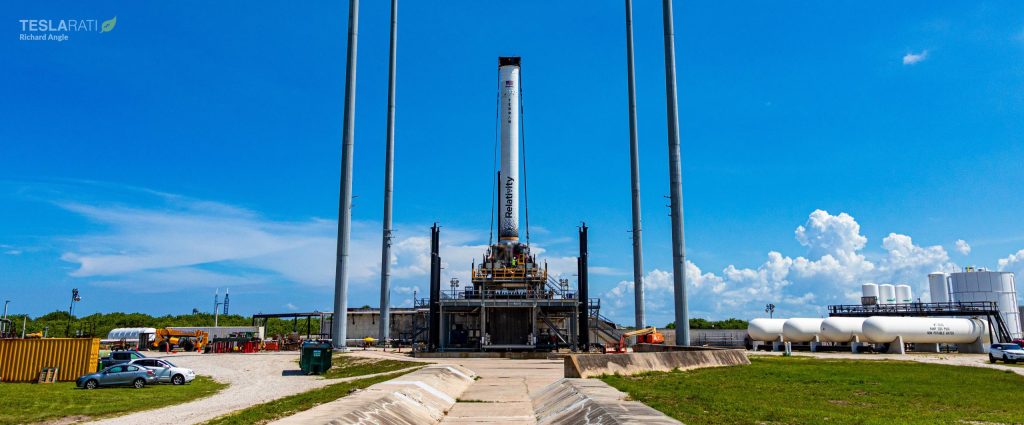
Once fully assembled, Terran 1 – weighing around 9.3 tons (~20,500 lb) empty and measuring 33.5 meters (110 ft) tall – will be the largest metal 3D-printed object in the history of the technology. From that perspective, it’s hardly surprising that Relativity Space is a few years behind schedule. In fact, it’s odd that the startup isn’t more delayed, and it’s even more impressive that Terran 1’s first launch campaign has gone as smoothly as it has.
Slow, Smooth and Fast
Terran 1 Flight 1’s booster stage and upper stage both arrived at the company’s leased Cape Canaveral Space Force Station LC-16 pad sometime in May 2022. Terran 1’s first stage came directly from the California factory. The second stage (S2), however, first shipped to a Mississippi test stand a few months prior and, on its first try, completed a full-duration multi-minute static fire test known as a mission duty cycle (MDC) – about as close as it’s possible to get to replicating orbital upper stage operations on the ground. The flawless MDC was preceded by a number of simpler precursor tests, of course, but the rocket performed more or less as expected throughout the entire qualification program. If Terran’s second stage ignites again, it’ll be at the edge of space.
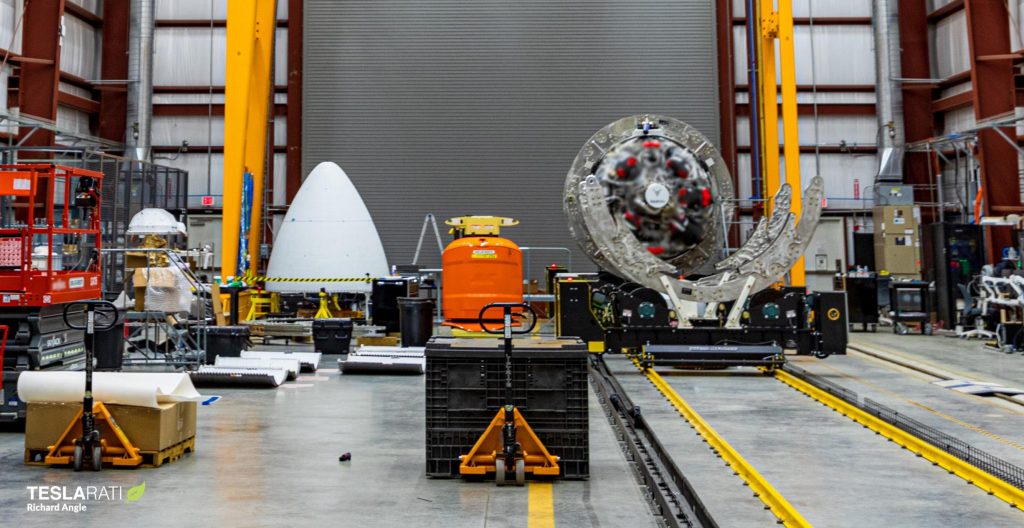
Since June, the critical path for Terran 1’s launch debut has thus been qualifying the first finished Terran booster. Rather than modify its Mississippi test facilities, Relativity decided to temporarily modify its heavily upgraded LC-16 pad to support booster qualification testing. Thanks to the heroic work of a shockingly small team of five people, the pad was ready to kick off testing as soon as the Terran 1 booster arrived in Florida. Even more surprisingly, senior manager Lorenzo Locante says that LC-16 – practically a new pad after Relativity’s extensive modifications – has “performed perfectly” during every booster qualification test attempted thus far.
That testing has included pneumatic proofing (an ambient-temperature gas pressure test), possible cryogenic proof tests, multiple rounds of propellant loading, preignition testing of its nine Aeon engines, and multiple spin-start tests (the last step before static fire testing) with the same engines. Given that LC-16 and Terran 1 must handle cryogenic oxidizer (liquid oxygen) and cryogenic fuel (liquid methane), which can easily create a flammable and bomb-like mixture of gases from even the smallest of leaks, it’s difficult to emphasize just how difficult it is to ensure that a complex launch pad and rocket perform nominally during their first joint testing.
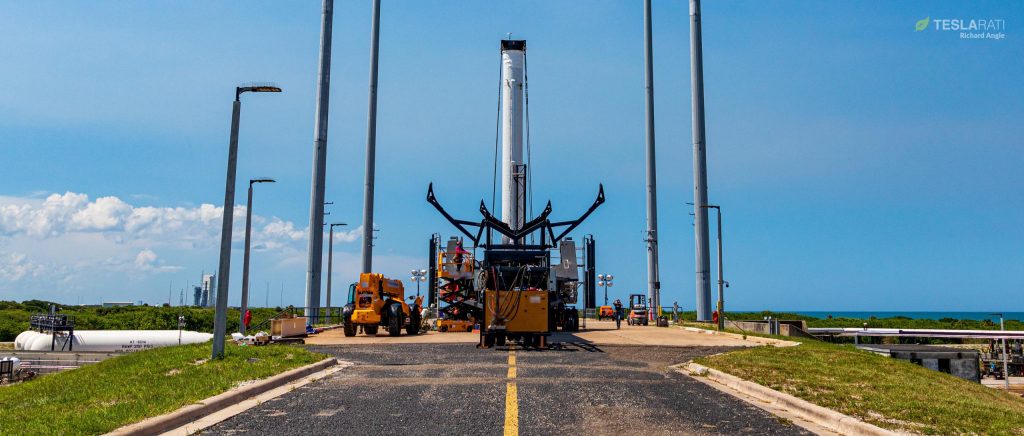
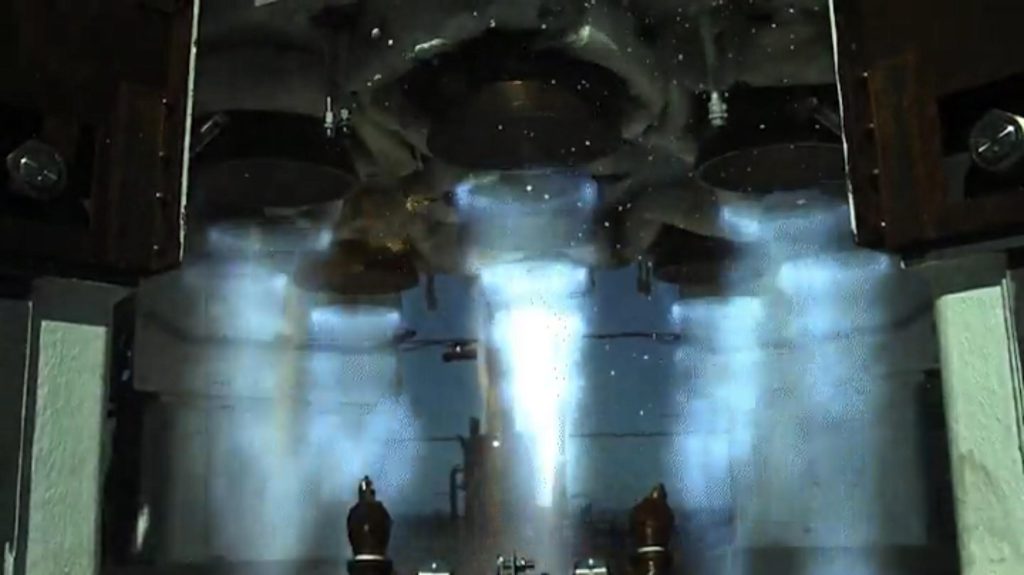
According to engineers onsite during a private Teslarati tour of Relativity’s Florida launch facilities, Terran 1 S1’s next goal is to fully ignite its Aeon engines. After one or more successful static fires, the booster will be integrated with the upper stage and nosecone for a final full-duration static fire test that will also double as a full wet dress rehearsal (WDR). Testing the fully-integrated Terran 1 rocket will only be possible once LC-16’s full strongback and launch mount (also known as a transporter/erector) is completed, but that final piece of the puzzle should be ready any day now.
De Terra Ad Astra
The coming weeks will likely be some of the company’s riskiest and most difficult yet. If the rocket and LC-16 continue to operate as smoothly as they have been, however, there’s a nonzero chance that Terran 1 could beat the likes of SpaceX (Starship), Blue Origin (New Glenn), and the United Launch Alliance (Vulcan Centaur) to the punch to become the first methane and oxygen-fueled rocket in history to attempt an orbital launch.*
*While SpaceX’s Starship is technically the first large-scale suborbital methalox rocket to attempt (and complete) a launch, there has never been an orbital methalox launch attempt.
Capable of carrying up to 1.25 tons (~2750 lb) to low Earth orbit for as little as $12 million, Terran 1 also has a shot at becoming the first new privately-developed 1-ton-class rocket of any kind to successfully reach orbit. On that front, though, Relativity is in a neck-and-neck race with Firefly Aerospace and ABL Space, both of which intend to launch similarly-sized rockets at some point in the next few months. It’s never been less clear who will cross the finish line first but one would be hard-pressed to count Relativity out.

Elon Musk
Tesla begins expanding Robotaxi access: here’s how you can ride
You can ride in a Tesla Robotaxi by heading to its website and filling out the interest form. The company is hand-picking some of those who have done this to gain access to the fleet.

Tesla has begun expanding Robotaxi access beyond the initial small group it offered rides to in late June, as it launched the driverless platform in Austin, Texas.
The small group of people enjoying the Robotaxi ride-hailing service is now growing, as several Austin-area residents are receiving invitations to test out the platform for themselves.
The first rides took place on June 22, and despite a very small number of very manageable and expected hiccups, Tesla Robotaxi was widely successful with its launch.
Tesla Robotaxi riders tout ‘smooth’ experience in first reviews of driverless service launch
However, Tesla is expanding the availability of the ride-hailing service to those living in Austin and its surrounding areas, hoping to gather more data and provide access to those who will utilize it on a daily basis.
Many of the people Tesla initially invited, including us, are not local to the Austin area.
There are a handful of people who are, but Tesla was evidently looking for more stable data collection, as many of those early invitees headed back to where they live.
The first handful of invitations in the second round of the Robotaxi platform’s Early Access Program are heading out to Austin locals:
I just got a @robotaxi invite! Super excited to go try the service out! pic.twitter.com/n9mN35KKFU
— Ethan McKanna (@ethanmckanna) July 1, 2025
Tesla likely saw an influx of data during the first week, as many traveled far and wide to say they were among the first to test the Robotaxi platform.
Now that the first week and a half of testing is over, Tesla is expanding invites to others. Many of those who have been chosen to gain access to the Robotaxi app and the ride-hailing service state that they simply filled out the interest form on the Robotaxi page of Tesla’s website.
That’s the easiest way you will also gain access, so be sure to fill out that form if you have any interest in riding in Robotaxi.
Tesla will continue to utilize data accumulated from these rides to enable more progress, and eventually, it will lead to even more people being able to hail rides from the driverless platform.
With more success, Tesla will start to phase out some of the Safety Monitors and Supervisors it is using to ensure things run smoothly. CEO Elon Musk said Tesla could start increasing the number of Robotaxis to monitors within the next couple of months.
Elon Musk
Tesla analyst issues stern warning to investors: forget Trump-Musk feud

A Tesla analyst today said that investors should not lose sight of what is truly important in the grand scheme of being a shareholder, and that any near-term drama between CEO Elon Musk and U.S. President Donald Trump should not outshine the progress made by the company.
Gene Munster of Deepwater Management said that Tesla’s progress in autonomy is a much larger influence and a significantly bigger part of the company’s story than any disagreement between political policies.
Munster appeared on CNBC‘s “Closing Bell” yesterday to reiterate this point:
“One thing that is critical for Tesla investors to remember is that what’s going on with the business, with autonomy, the progress that they’re making, albeit early, is much bigger than any feud that is going to happen week-to-week between the President and Elon. So, I understand the reaction, but ultimately, I think that cooler heads will prevail. If they don’t, autonomy is still coming, one way or the other.”
BREAKING: GENE MUNSTER SAYS — $TSLA AUTONOMY IS “MUCH BIGGER” THAN ANY FEUD 👀
He says robotaxis are coming regardless ! pic.twitter.com/ytpPcwUTFy
— TheSonOfWalkley (@TheSonOfWalkley) July 2, 2025
This is a point that other analysts like Dan Ives of Wedbush and Cathie Wood of ARK Invest also made yesterday.
On two occasions over the past month, Musk and President Trump have gotten involved in a very public disagreement over the “Big Beautiful Bill,” which officially passed through the Senate yesterday and is making its way to the House of Representatives.
Musk is upset with the spending in the bill, while President Trump continues to reiterate that the Tesla CEO is only frustrated with the removal of an “EV mandate,” which does not exist federally, nor is it something Musk has expressed any frustration with.
In fact, Musk has pushed back against keeping federal subsidies for EVs, as long as gas and oil subsidies are also removed.
Nevertheless, Ives and Wood both said yesterday that they believe the political hardship between Musk and President Trump will pass because both realize the world is a better place with them on the same team.
Munster’s perspective is that, even though Musk’s feud with President Trump could apply near-term pressure to the stock, the company’s progress in autonomy is an indication that, in the long term, Tesla is set up to succeed.
Tesla launched its Robotaxi platform in Austin on June 22 and is expanding access to more members of the public. Austin residents are now reporting that they have been invited to join the program.
Elon Musk
Tesla surges following better-than-expected delivery report
Tesla saw some positive momentum during trading hours as it reported its deliveries for Q2.

Tesla (NASDAQ: TSLA) surged over four percent on Wednesday morning after the company reported better-than-expected deliveries. It was nearly right on consensus estimations, as Wall Street predicted the company would deliver 385,000 cars in Q2.
Tesla reported that it delivered 384,122 vehicles in Q2. Many, including those inside the Tesla community, were anticipating deliveries in the 340,000 to 360,000 range, while Wall Street seemed to get it just right.
Tesla delivers 384,000 vehicles in Q2 2025, deploys 9.6 GWh in energy storage
Despite Tesla meeting consensus estimations, there were real concerns about what the company would report for Q2.
There were reportedly brief pauses in production at Gigafactory Texas during the quarter and the ramp of the new Model Y configuration across the globe were expected to provide headwinds for the EV maker during the quarter.
At noon on the East Coast, Tesla shares were up about 4.5 percent.
It is expected that Tesla will likely equal the number of deliveries it completed in both of the past two years.
It has hovered at the 1.8 million mark since 2023, and it seems it is right on pace to match that once again. Early last year, Tesla said that annual growth would be “notably lower” than expected due to its development of a new vehicle platform, which will enable more affordable models to be offered to the public.
These cars are expected to be unveiled at some point this year, as Tesla said they were “on track” to be produced in the first half of the year. Tesla has yet to unveil these vehicle designs to the public.
Dan Ives of Wedbush said in a note to investors this morning that the company’s rebound in China in June reflects good things to come, especially given the Model Y and its ramp across the world.
He also said that Musk’s commitment to the company and return from politics played a major role in the company’s performance in Q2:
“If Musk continues to lead and remain in the driver’s seat, we believe Tesla is on a path to an accelerated growth path over the coming years with deliveries expected to ramp in the back-half of 2025 following the Model Y refresh cycle.”
Ives maintained his $500 price target and the ‘Outperform’ rating he held on the stock:
“Tesla’s future is in many ways the brightest it’s ever been in our view given autonomous, FSD, robotics, and many other technology innovations now on the horizon with 90% of the valuation being driven by autonomous and robotics over the coming years but Musk needs to focus on driving Tesla and not putting his political views first. We maintain our OUTPERFORM and $500 PT.”
Moving forward, investors will look to see some gradual growth over the next few quarters. At worst, Tesla should look to match 2023 and 2024 full-year delivery figures, which could be beaten if the automaker can offer those affordable models by the end of the year.
-

 Elon Musk2 days ago
Elon Musk2 days agoTesla investors will be shocked by Jim Cramer’s latest assessment
-

 News1 week ago
News1 week agoTesla Robotaxi’s biggest challenge seems to be this one thing
-

 Elon Musk2 weeks ago
Elon Musk2 weeks agoElon Musk slams Bloomberg’s shocking xAI cash burn claims
-

 News2 weeks ago
News2 weeks agoTexas lawmakers urge Tesla to delay Austin robotaxi launch to September
-

 Elon Musk1 week ago
Elon Musk1 week agoFirst Look at Tesla’s Robotaxi App: features, design, and more
-

 Elon Musk2 weeks ago
Elon Musk2 weeks agoTesla Robotaxis are becoming a common sight on Austin’s public roads
-

 Elon Musk2 weeks ago
Elon Musk2 weeks agoSpaceX President meets India Minister after Starlink approval
-

 Elon Musk2 weeks ago
Elon Musk2 weeks agoxAI’s Grok 3 partners with Oracle Cloud for corporate AI innovation



















